Your Guide to Enneagram Type Descriptions
Ever felt like you're running on a program you didn't write? The Enneagram offers a fascinating look under the hood at the very motivations that drive your day-to-day life. It maps out nine core personality styles , each with its own unique way of seeing the world. Think of it less like a rigid label and more like a launchpad for some serious self-discovery.

So, What's the Enneagram Really About?
Let’s be clear: this isn't your average, run-of-the-mill personality quiz. The Enneagram is a dynamic, living system for personal growth—a sort of GPS for your inner world. It doesn't just point out what you do; it digs deep into the why behind your actions.
At its core, the Enneagram suggests we all adopt one of nine main strategies to get by in the world. Each of these nine types is fueled by a fundamental desire and a corresponding fear that sits on the other side of that same coin. For instance, a Type Three (The Achiever) is driven to feel valuable and worthwhile, which means their deepest fear is being seen as worthless. This dynamic duo of desire and fear creates the lens through which they see everything.
Getting to Your Core Motivation
The real "a-ha!" moments with the Enneagram come when you start to see these hidden drivers in action. It’s like finally noticing the invisible scripts that have been running your life on autopilot. Once you understand what makes your type tick, you can start making conscious choices instead of just reacting.
This journey is all about boosting your self-awareness. To get started, it’s worth taking a moment to understand what the Enneagram is at its foundation.
You’ll likely see a bit of yourself in several types, but one will resonate as your home base. Interestingly, some types are more common than others. A huge global survey of nearly 190,000 people found that Type 9 (The Peacemaker) is the most common at 16.2% , while Type 5 (The Investigator) is the rarest, showing up only 4.8% of the time.
The Enneagram doesn't put you in a box. It shows you the box you're already in—and the way out.
This isn't about slapping a judgment on yourself or anyone else. Far from it. These detailed Enneagram type descriptions give us a compassionate language to talk about our greatest strengths, our most frustrating blind spots, and the unique paths we can take toward becoming our best, most authentic selves. It's an incredible tool for building empathy, starting with yourself.
The Three Centers of Intelligence: Your Inner GPS
Beyond the nine distinct personality types, the Enneagram gives us another powerful lens: The Three Centers of Intelligence, also known as The Enneagram Triads. Think of these as your internal operating system—the default mode you use to process the world. While we all use our head, heart, and gut, one of them is almost always calling the shots.
So, are you driven by instinct, emotion, or logic? This grouping digs deeper than the surface-level enneagram type descriptions , revealing the core struggle that links three seemingly different numbers together.
The Instinctive Center (The Gut)
Meet the Gut triad: Types Eight , Nine , and One . These folks are all about autonomy, control, and holding their ground. Their reactions are visceral and immediate—they trust their gut instincts above all else, often acting before they've had a chance to think it through or check in with their feelings.
Imagine this center as the body's security detail, instinctively patrolling boundaries and making sure everything is in its rightful place. The deep-seated emotion they all wrestle with is anger . Eights wear it on their sleeve, Ones try to bottle it up, and Nines do their best to pretend it doesn't exist.
The Feeling Center (The Heart)
This is home to Types Two , Three , and Four . For the Heart triad, life is filtered through the lens of image and perception. They're constantly gauging their own emotional state and, just as importantly, how others see them. Their internal monologue is often a version of, "What does this mean to me?" and "What do they think of me?"
Think of this center as a public relations team, managing relationships and shaping the narrative. Their shared emotional wound is shame . Twos combat it by being indispensable, Threes by chasing success, and Fours by cultivating a unique identity that sets them apart.
You can start to see how these groupings of instinct, feeling, and thinking form the very structure of the Enneagram.
The Thinking Center (The Head)
Last but not least, we have the Head triad: Types Five , Six , and Seven . These types live in a world of analysis, plans, and mental frameworks. They're driven by a need for security and certainty, trying to map out every possibility and think their way around danger before it strikes.
This is the strategic planning department, constantly forecasting, running scenarios, and managing risk. The core emotion they're always navigating is fear . Fives retreat from it into the safety of their minds, Sixes confront it by preparing for every worst-case scenario, and Sevens run from it by distracting themselves with endless plans and adventures.
Pinpointing your Center of Intelligence is like discovering the source code for your personality. It explains the why behind the what —the core engine of anger, shame, or fear that powers your every move.
Understanding your dominant center adds incredible depth to your self-awareness journey. It makes the individual enneagram type descriptions resonate on a much deeper level by showing you the fundamental problem your personality was originally designed to solve.
Alright, let's get to the good stuff. Now we meet the cast of characters at the heart of the Enneagram. This is where you’ll be introduced to the nine core personality types, each with its own unique way of seeing and being in the world.
Forget dry, dusty definitions. We’re going to explore detailed enneagram type descriptions that feel more like meeting a real person than reading a textbook.
Think of each type as the hero of their own story. They all have a deep-seated quest (their Core Desire ), a specific dragon they’re trying to slay (their Core Fear ), and a unique set of skills for navigating the journey of life. Let's jump in and see which of these stories resonates most with yours.

Enneagram Type 1: The Reformer
First up, meet the person with an internal compass that's permanently stuck on "do the right thing." The Reformer is all about goodness, integrity, and making things better. They've got a hawk-eye for what’s wrong and an unstoppable drive to improve themselves, their surroundings, and, well, pretty much everything.
This type has a loud "inner critic" on their shoulder, constantly whispering about how things should be. Their biggest fear is being corrupt, evil, or somehow defective, which is what fuels their crusade to be honorable and good. When they’re at their best, Ones are wise, inspiring, and morally courageous leaders.
But that perfectionism can be a real bear. Under pressure, they can become rigid, critical, and resentful when the world (and the people in it) inevitably fail to meet their sky-high standards. A huge part of their growth is learning to embrace the beauty of imperfection.
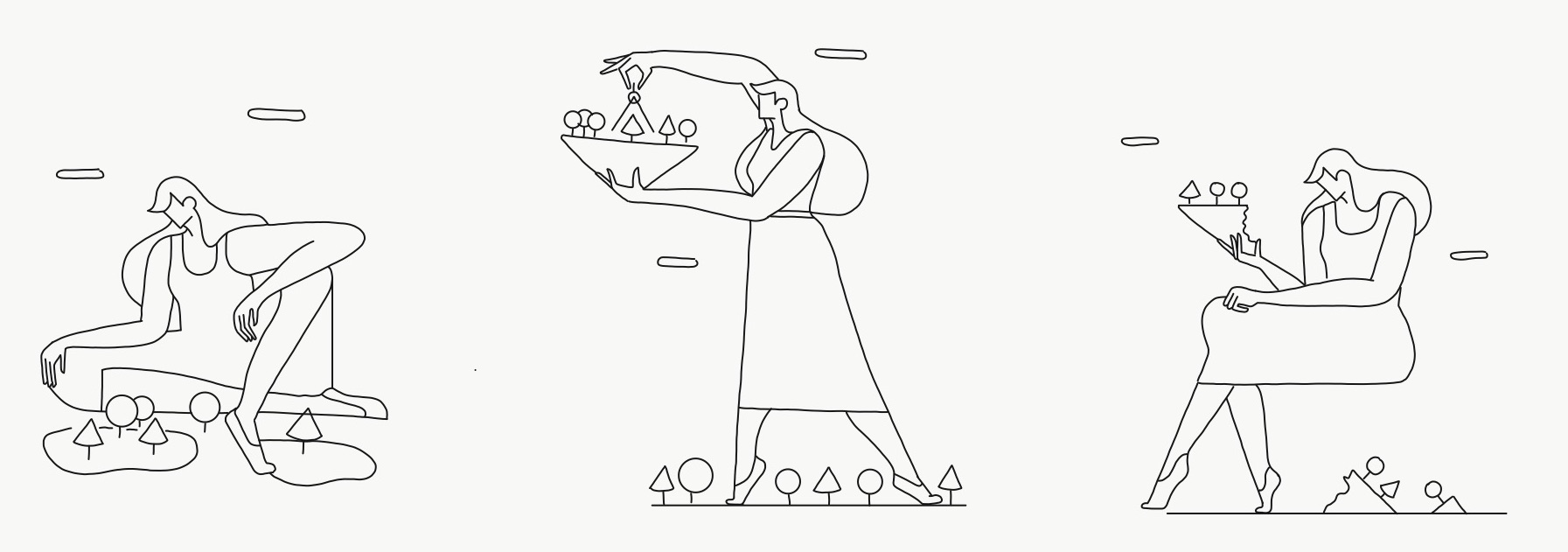
Enneagram Type 2: The Helper
Say hello to the heart and soul of any group— The Helper. Twos are driven by a profound need to be loved, wanted, and appreciated. They are naturally warm, generous, and incredibly empathetic, practically masters at sensing what others need before they even know it themselves.
Their core fear is being unwanted or seen as unworthy of love. This can push them into overdrive, where they give and give and give, sometimes completely forgetting about their own needs in the process. Asking for help? That's a real struggle, as they often believe their value is tied directly to how much they do for others.
At their healthiest, Twos give love freely and unconditionally, with no strings attached. Their journey is about realizing they are worthy of love just for being who they are, not for what they do. That’s when they can love from a place of genuine abundance, not a place of need.
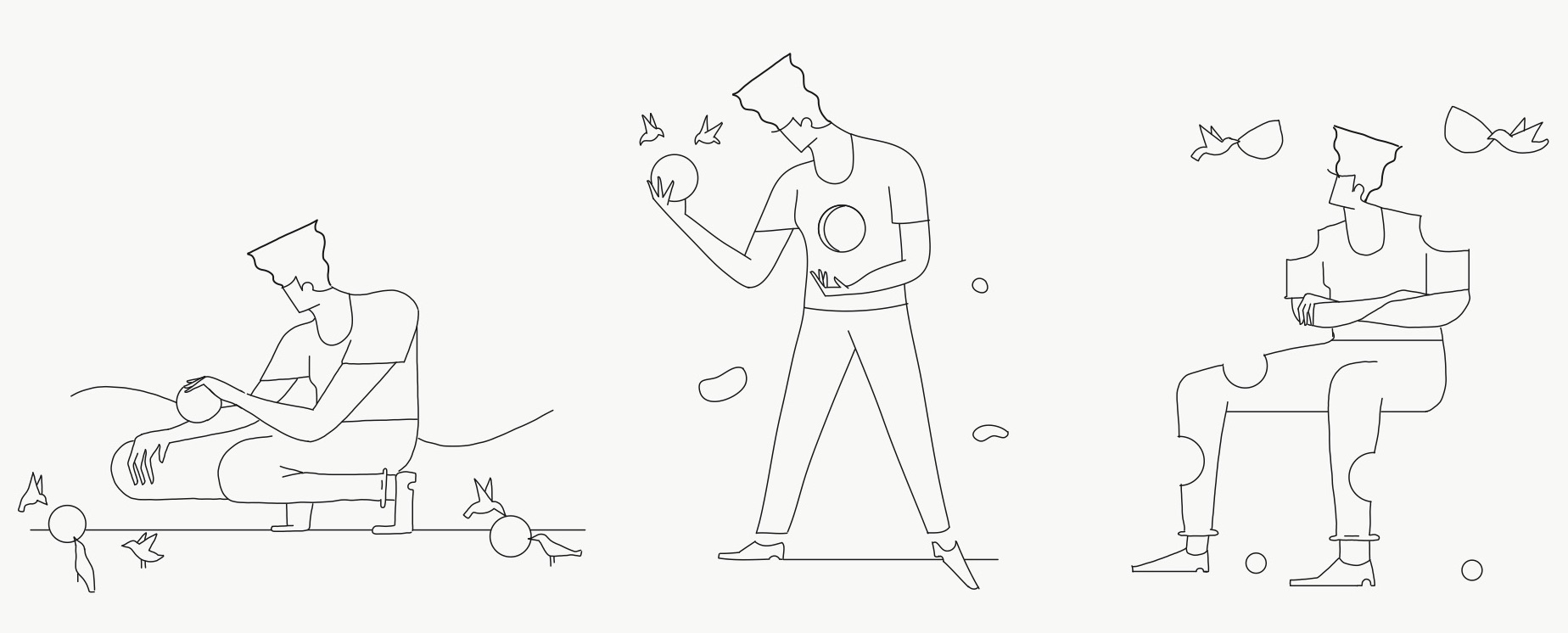
Enneagram Type 3: The Achiever
And here’s the star of the show: The Achiever . Threes are charismatic, driven, and motivated by a desire to be valuable and worthwhile. They are absolute wizards at setting ambitious goals and then blowing past them, often becoming the polished, successful role models everyone looks up to.
But beneath that confident exterior is a deep-seated fear of being worthless. This fear is the engine that drives them to seek validation through one success after another. The danger is that they can lose touch with who they really are, focusing instead on crafting the perfect image of success for the world to admire.
Threes often live by the mantra, "You are what you do." Their growth journey is about flipping that script to "You are, and what you do flows from that."
Truly healthy Threes are authentic and self-accepting. They learn their worth isn't hanging on their latest win, which frees them up to inspire people not just with their impressive accomplishments, but with their genuine selves.
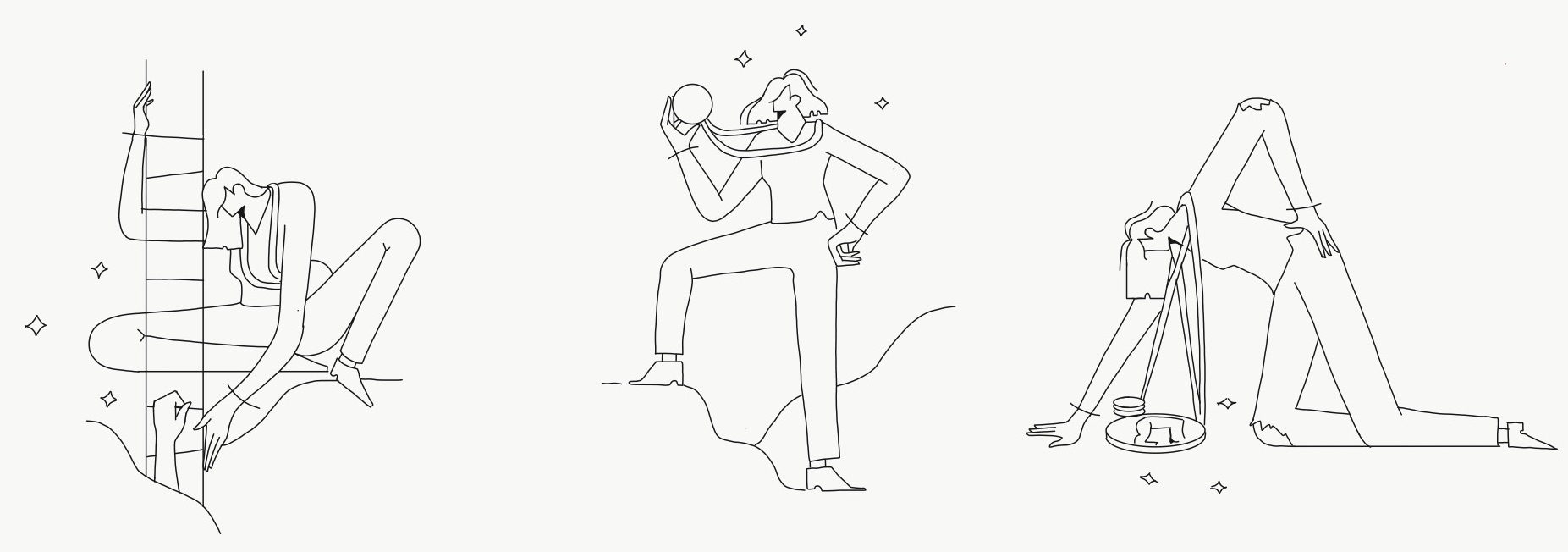
Enneagram Type 4: The Individualist
Enter The Individualist , the sensitive, introspective artist of the Enneagram. Fours are on a quest to find their unique identity and to create something beautiful and significant out of their emotional world. They are deeply in touch with the full spectrum of human feeling, seeing both the beauty and the tragedy that many others miss.
Their core fear? Having no real identity or personal significance—of just being… ordinary. This can make them feel profoundly misunderstood and lead them to cultivate an identity built on being different. At times, they can get lost in a sea of melancholy, feeling like something vital is missing.
At their best, Fours are powerfully creative and emotionally honest. They learn to source their identity from within, turning their personal pain and joy into something universal and beautiful. They teach the rest of us how to be truly authentic.
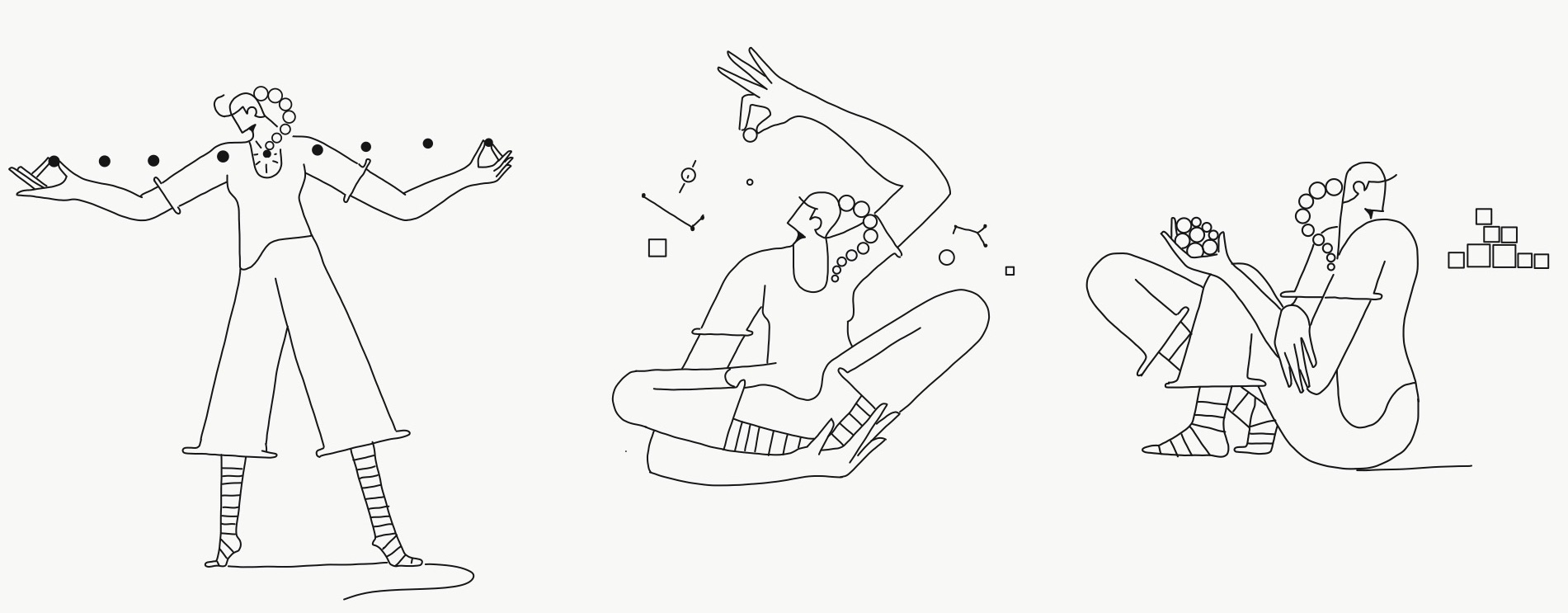
Enneagram Type 5: The Investigator
The Investigator is the intense, cerebral observer of the group. Fives are motivated by a core need to understand how the world works and where they fit into it. They are perceptive, insightful, and capable of diving deep into complex subjects until they become true experts.
Their greatest fear is being helpless, incapable, or useless. To guard against this, they tend to hoard their resources—like time, energy, and knowledge—believing they need to be fully prepared before they can step into the world. This can lead to isolation as they retreat into the safety of their own minds.
Healthy Fives are visionary pioneers who aren't afraid to share their knowledge. They connect their brilliant mental maps to the real world, becoming innovators and thought leaders who help us all see things in a completely new light.

Enneagram Type 6: The Loyalist
Here we have The Loyalist , the committed, security-focused foundation of any community. Sixes are driven by a need for safety, security, and support. They are incredibly responsible, hardworking, and trustworthy—the kind of person you want in your corner when things get tough. They're also master troubleshooters, always scanning for what could go wrong.
Their core fear is being left without support or guidance. This underlying anxiety can play out in two very different ways. Some Sixes become cautious and indecisive (phobic), while others push back against their fear by becoming rebellious and defiant (counter-phobic).
A healthy Six is their own authority. They learn to trust their inner guidance, becoming self-reliant, courageous, and incredibly supportive allies for the underdog.
Their journey is all about learning to trust themselves. When they find that inner faith, they transform from anxious worriers into steady, confident leaders who bring stability to everyone around them.

Enneagram Type 7: The Enthusiast
Get ready for the life of the party: The Enthusiast ! Sevens are motivated by a desire to be happy, satisfied, and to avoid pain like the plague. They are naturally optimistic, spontaneous, and high-energy people who are always on the lookout for the next exciting experience.
Their deepest fear is being deprived or trapped in emotional pain. This fear keeps them constantly on the move, cramming their schedules full of fun future plans to keep from having to deal with any present discomfort. The downside? Their boundless energy can make them scattered, leaving a trail of unfinished projects in their wake.
At their best, Sevens discover that true, lasting joy comes from embracing all of life, not just the fun parts. They become grounded and appreciative, channeling their many talents toward meaningful goals. A healthy Seven radiates a deep, joyous presence, not just frantic energy.
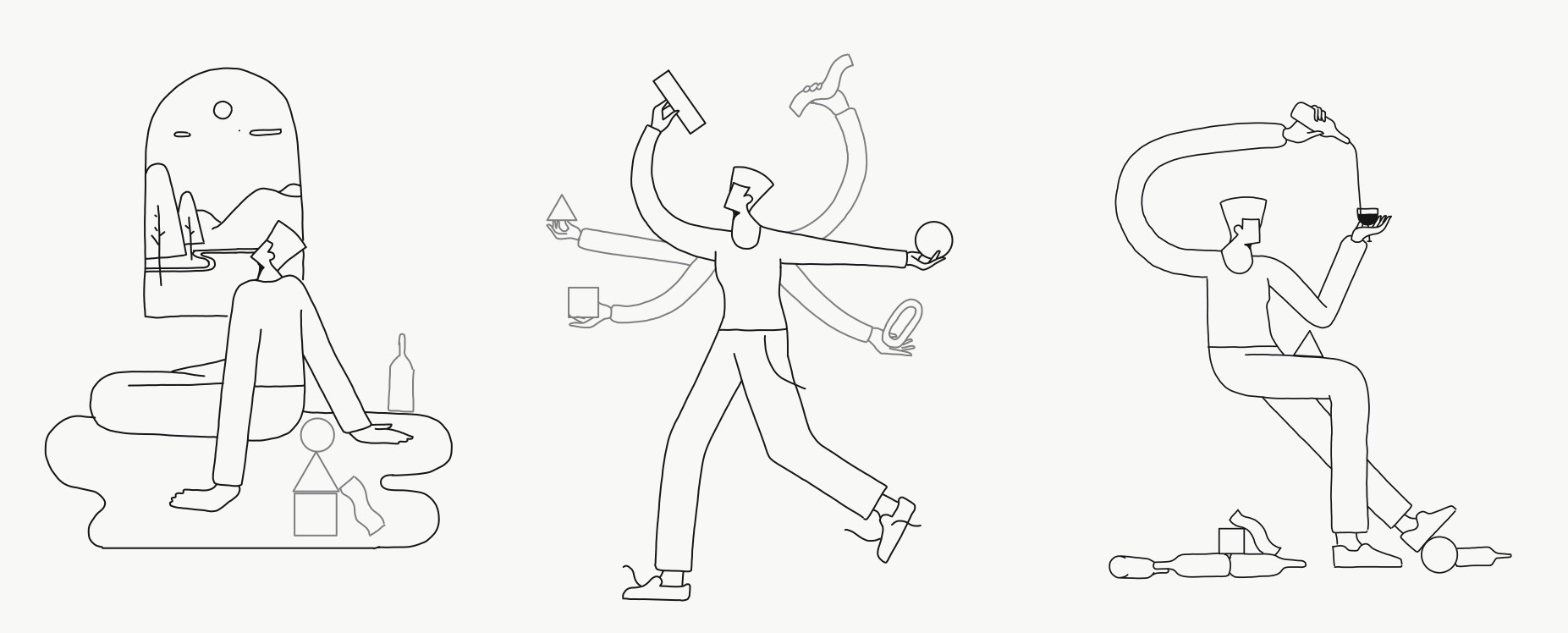
Enneagram Type 8: The Challenger
The Challenger is the powerful, decisive, take-charge leader of the Enneagram. Eights are driven by a need to protect themselves and to be in control of their own lives and destinies. They are assertive, resourceful, and have a commanding presence that makes people sit up and listen.
Their core fear is being controlled or harmed by others. To prevent this, they build up a fortress of strength and intensity. They are champions for the underdog but can come across as confrontational or intimidating, as they find it incredibly difficult to show any vulnerability.
Healthy Eights learn to pair their incredible strength with compassion. They use their power not to dominate, but to empower and lift others up. They become true heroes—magnanimous leaders who protect the vulnerable and fight for a more just world.
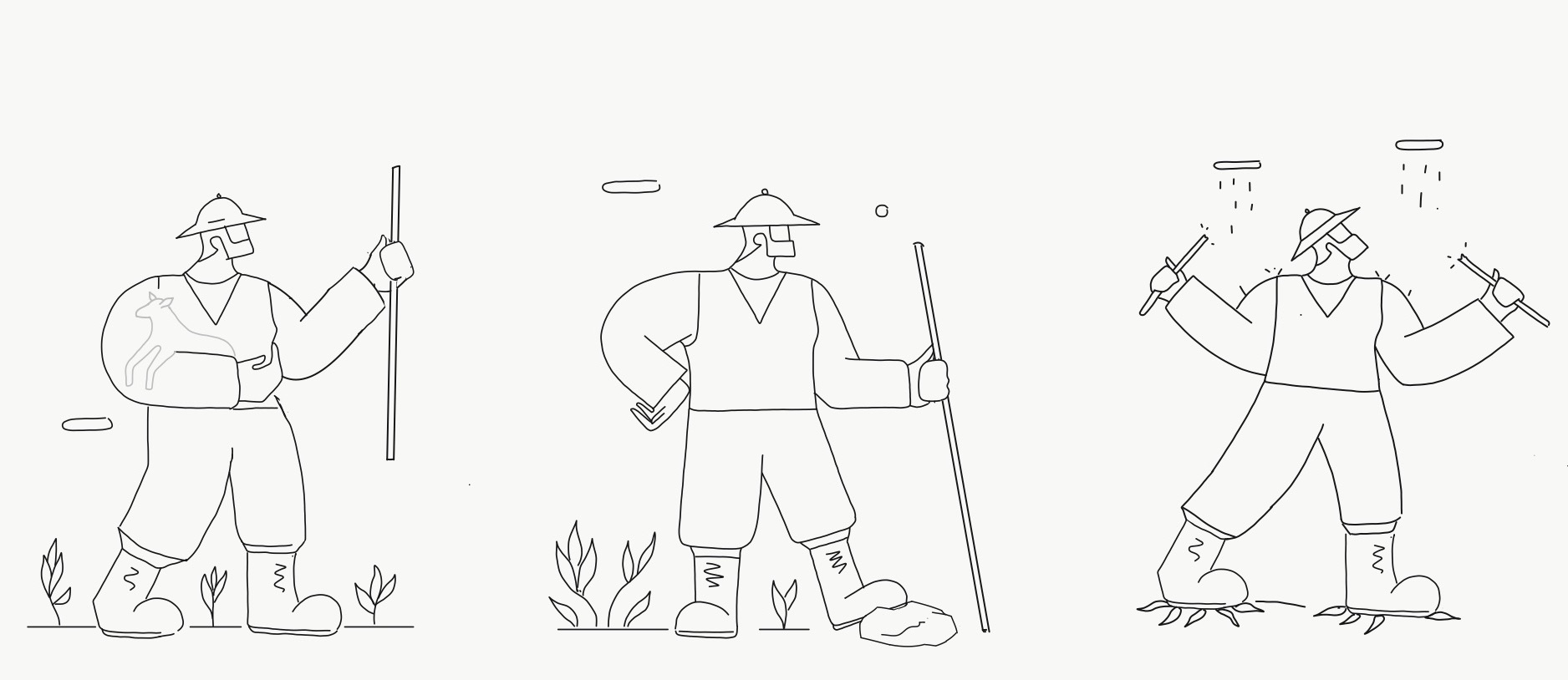
Enneagram Type 9: The Peacemaker
And finally, we have the easygoing, receptive Peacemaker . Nines are motivated by a deep desire for inner stability and outer harmony. They are accepting, trusting, and patient people who act as natural mediators, with an amazing ability to see and validate all sides of an issue.
Their core fear is loss, separation, and conflict. To avoid rocking the boat, they often "go along to get along," merging with the wishes of others while downplaying their own needs. This can lead to a kind of stubborn passivity where they simply tune out anything that feels too stressful or demanding.
When they’re at their best, Nines are fully engaged and present. They learn that their own voice matters and that true peace isn’t about avoiding conflict, but about showing up authentically. A healthy Nine is an unstoppable, inclusive force for good, capable of healing rifts and bringing people together.
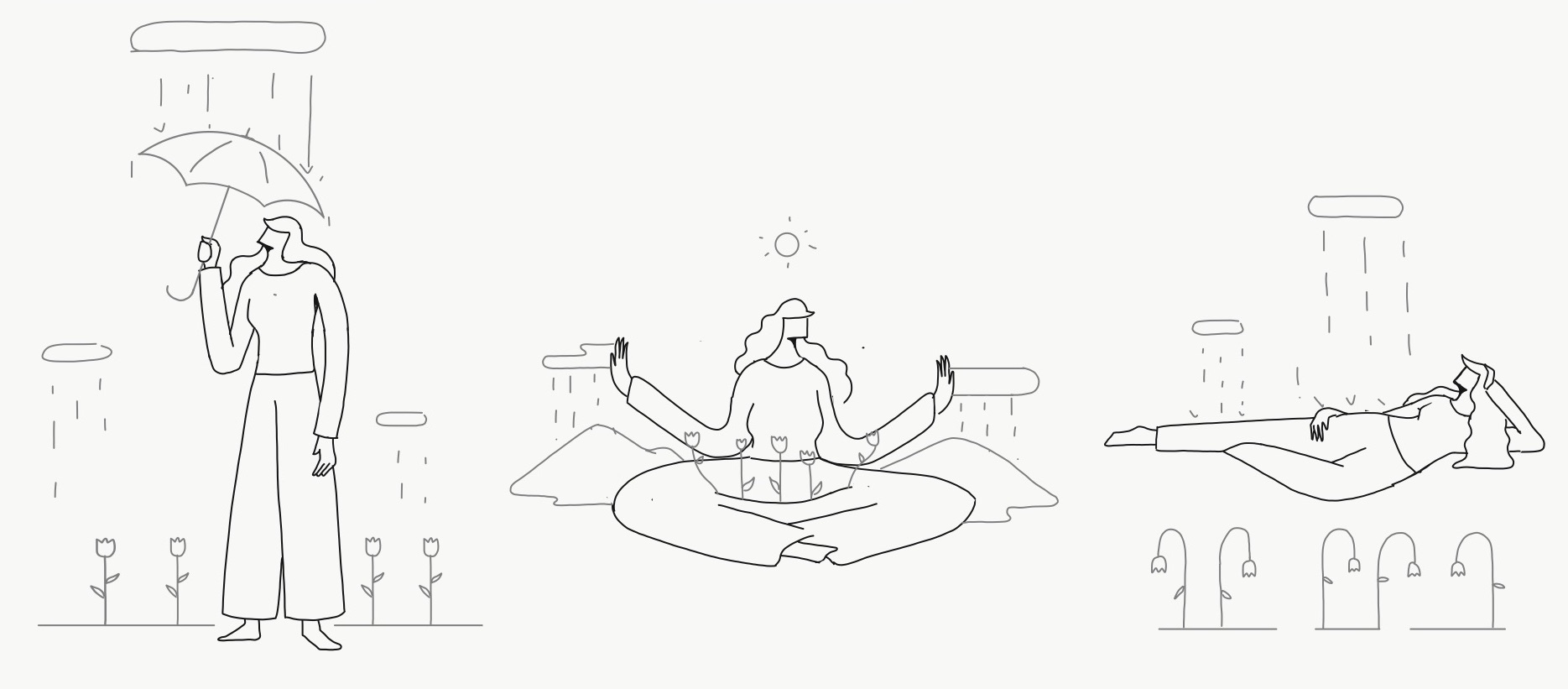
As you read through these enneagram type descriptions , remember that they're just the beginning of the story, not the final chapter. To get an even richer picture of these fascinating archetypes, you can explore the Enneatypes in more detail on Enneagram Universe. Finding your type is the first big step on an incredible path of self-discovery.
How Wings Add Nuance to Your Type
So you’ve figured out your main Enneagram type. Awesome! But you’ve probably noticed that the description, while accurate, doesn't capture everything about you. That’s because nobody is a pure, one-dimensional version of their type. This is where wings come in, and it's where the Enneagram gets really interesting.
Your wings are simply the two numbers on either side of your core type on the Enneagram symbol. You can draw on the energy of both, but one is usually way more influential, adding its own distinct spice to your personality. Discover your Wing by taking the Enneagram Wing Test for FREE!
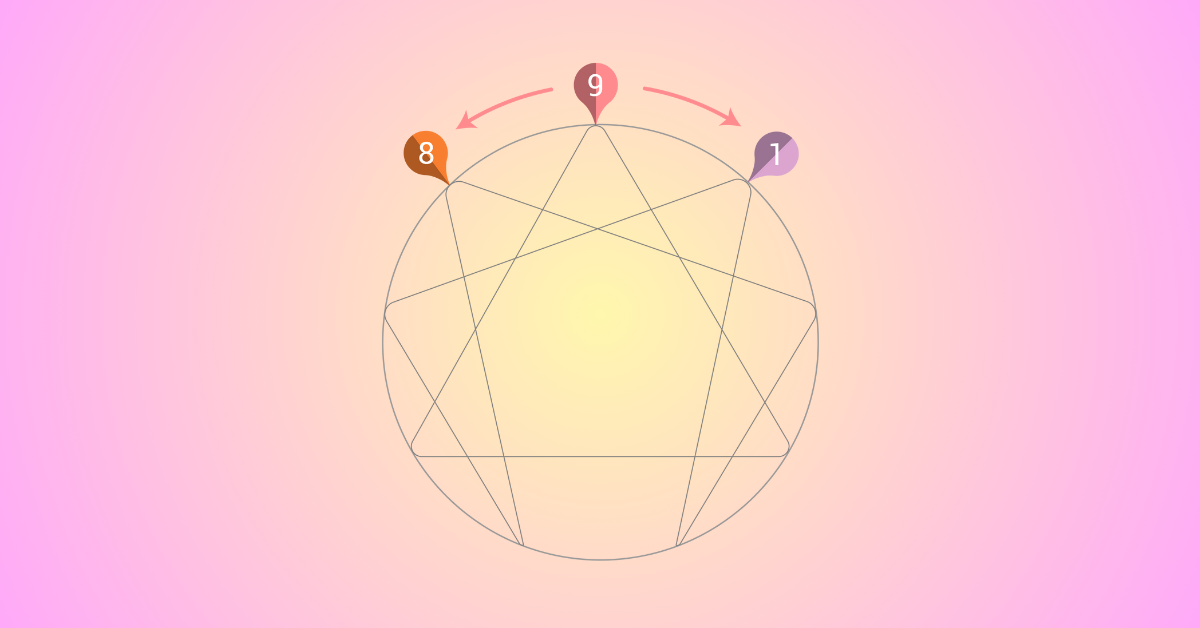
Think of your core type as the main course of a meal. Let’s say you’re a Type 9, a classic comfort food dish. Your wing is the side dish that changes the whole experience. A Nine with a strong Eight wing is like mac and cheese with a side of spicy jalapeños—still comforting, but with a grounded, assertive kick. A Nine with a One wing is more like that same mac and cheese with a perfectly arranged, crisp side salad—more orderly and principled. The core is the same, but the flavor profile is totally different.
Pinpointing Your Dominant Wing
This subtle blending is precisely why two people of the same type can look and feel so unalike. That Type 9 with a One wing (often called "The Dreamer") comes across as more idealistic and self-controlled. Meanwhile, the Type 9 with an Eight-wing ("The Referee") feels more direct and action-oriented. Same core motivation, wildly different expression.
Figuring out which wing you lean on helps paint a much more accurate picture of who you are. It’s not about being a different type; it's about seeing the secondary colors that make your personal portrait unique. To dive deeper into this, you can learn more about how Enneagram Wings influence your personality.
Exploring the Wing Combinations
Since every one of the nine types has two possible wings, we end up with 18 distinct personality archetypes. It’s a whole new level of nuance.
Here’s a quick taste of what that looks like:
• A 2w1 (Two with a One Wing): • • This is the "Servant." • They are principled and dedicated, driven to help others in the most ethical and correct way possible.
• A 2w3 (Two with a Three Wing): • • This is the "Host/Hostess." • They are more charming and image-conscious, loving the social connection and recognition that comes from helping others.
• A 4w3 (Four with a Three Wing): • • This is "The Aristocrat." • This Individualist is more dramatic and ambitious, crafting a unique and successful public persona.
• A 4w5 (Four with a Five Wing): • • This is "The Bohemian." • This Individualist is more withdrawn and intellectual, preferring to explore their identity through deep, sometimes eccentric, study and introspection.
Your dominant wing is like your personality’s co-pilot. It’s not in charge, but it’s definitely whispering suggestions, pointing out scenic routes, and controlling the radio.
Getting to know your wing helps explain those little quirks that don’t quite fit your main type’s description. It rounds out the picture, adding the richness and detail that make your Enneagram profile feel less like a label and more like a true reflection of you.
The Enneagram in Motion: Your Paths to Growth and Stress
Here’s where the Enneagram gets really interesting. It’s not just about slapping a label on yourself and calling it a day. Your type isn't a box you're stuck in forever; it's more like a home base on a much larger map of your personality.
This is where the ideas of growth (integration) and stress (disintegration) come into play, revealing how you dynamically shift and change under different circumstances.
Think of it like this: your core personality is your default setting. When you’re feeling great—secure, self-aware, and really in the flow—you start to stretch. You naturally borrow some of the best qualities of another Enneagram type. But when you’re stressed out, overwhelmed, or just not at your best, you tend to snap back and unconsciously take on the unhealthy habits of a different type. These movements aren't random; they follow very specific pathways.
Your Two Directions: Thriving vs. Surviving
Every single type has a predictable line of growth and a predictable line of stress . When you're thriving, you move toward your growth number, and it feels fantastic. You're accessing strengths that help balance out your core type's biggest weaknesses. It's like finding a hidden superpower you didn't know you had.
On the flip side, when the pressure mounts, you slide down the path toward your stress number. This is usually an automatic, knee-jerk reaction where you adopt the unhealthy behaviors of that type as a wonky coping mechanism. Knowing these two directions is like having an internal weather forecast. It helps you see the storm clouds gathering and gives you a map to find the sunshine again.
The Enneagram doesn't just show you the box you've put yourself in; it hands you the keys to get out. Your growth and stress paths are those keys.
The Inner Map of Your Personality Shifts
So, where do you go when you’re at your best, and where do you retreat when you’re under fire? These movements are fundamental to using the Enneagram for actual self-development. For instance, a Type 1 (The Reformer), who is normally so principled and orderly, can become moody and withdrawn like an unhealthy Type 4 when stressed. But when that same Type 1 is growing, they tap into the joyful, spontaneous energy of a healthy Type 7 .
These dynamic connections are what bring the system to life. Let’s break down the specific paths for each type.
Enneagram Stress And Growth Paths
This table is your cheat sheet for understanding the dynamic nature of your Enneagram type. It shows exactly where you're headed when you're integrating (growing) and where you tend to slip when you're disintegrating (under stress).
| Core Type | Moves Toward in Growth (Integration) | Moves Toward in Stress (Disintegration) |
|---|---|---|
| Type 1 | Type 7 (The Enthusiast) | Type 4 (The Individualist) |
| Type 2 | Type 4 (The Individualist) | Type 8 (The Challenger) |
| Type 3 | Type 6 (The Loyalist) | Type 9 (The Peacemaker) |
| Type 4 | Type 1 (The Reformer) | Type 2 (The Helper) |
| Type 5 | Type 8 (The Challenger) | Type 7 (The Enthusiast) |
| Type 6 | Type 9 (The Peacemaker) | Type 3 (The Achiever) |
| Type 7 | Type 5 (The Investigator) | Type 1 (The Reformer) |
| Type 8 | Type 2 (The Helper) | Type 5 (The Investigator) |
| Type 9 | Type 3 (The Achiever) | Type 6 (The Loyalist) |
Once you start spotting these shifts in your own behavior, it’s an absolute game-changer. Suddenly, the enneagram type descriptions aren't just static profiles. They become a living, breathing guide that helps you navigate your inner world with a lot more wisdom and a little more grace.
Your Burning Enneagram Questions, Answered
As you start digging into the different enneagram type descriptions , you’re bound to have some questions bubble up. It happens to everyone. Let's clear the air and tackle some of the most common head-scratchers people have when they first stumble upon this incredible system.
Think of this as your personal Enneagram help desk.
Can My Enneagram Type Change Over Time?
This is the big one, the question almost everyone asks right out of the gate. The short answer? No. Your core Enneagram type is for life.
Think of it like this: your type is the foundational blueprint of your personality, laid down when you were young to help you make sense of the world. It’s your internal operating system. That OS doesn't just get uninstalled.
But—and this is a big but—how you express your type can and absolutely should change. As you grow and become more self-aware, you stop being a slave to your type's worst impulses and start accessing its healthiest qualities. A self-aware Type 8, for example, is a world away from a stressed-out, reactive Type 8. The core motivation is the same, but the behavior is night and day.
How Is The Enneagram Different From Myers-Briggs?
Ah, the classic showdown! Many of us cut our teeth on the Myers-Briggs Type Indicator (MBTI), so it's a natural comparison. Both systems are brilliant for self-discovery, but they’re looking at you through different lenses.
• MBTI tells you • what • you do. • It’s fantastic for describing your behavior and how you process information. It’s the "how" and "what" of your personality.
• The Enneagram tells you • why • you do it. • It dives a layer deeper into the core fears and desires that secretly run the show. It’s the engine under the hood.
The two systems actually play together surprisingly well. A massive poll showed some fascinating correlations—like how most ENFJs identify as Type 2s, and INTJs often land on Type 5. If you're curious to see more of these overlaps, check out the detailed breakdown on Enneagram vs MBTI Explained .
What Is The Best Way To Find My Type?
An online test is a great starting point, but don't treat it as gospel. The truth is, tests can easily get fooled by your behavior, mistaking it for your deeper motivation.
The most accurate way to find your type is to do the inner work yourself. It involves a bit of reading and a lot of honest self-reflection.
The best "test" is to read through the core fears and desires of all nine enneagram type descriptions . The one that makes you squirm a little—the one that feels a bit too real, like someone’s been reading your mail—that’s probably your type.
Your real type is the one whose fundamental "why" clicks with your entire life story. It’s less of a quiz and more of a "coming home" moment. And that's where the real journey begins.
Ready to stop guessing and start knowing? Enneagram Universe has a free, comprehensive personality test to help you pinpoint your core type, wing, and personal growth path. Kickstart your journey today at Enneagram Universe .